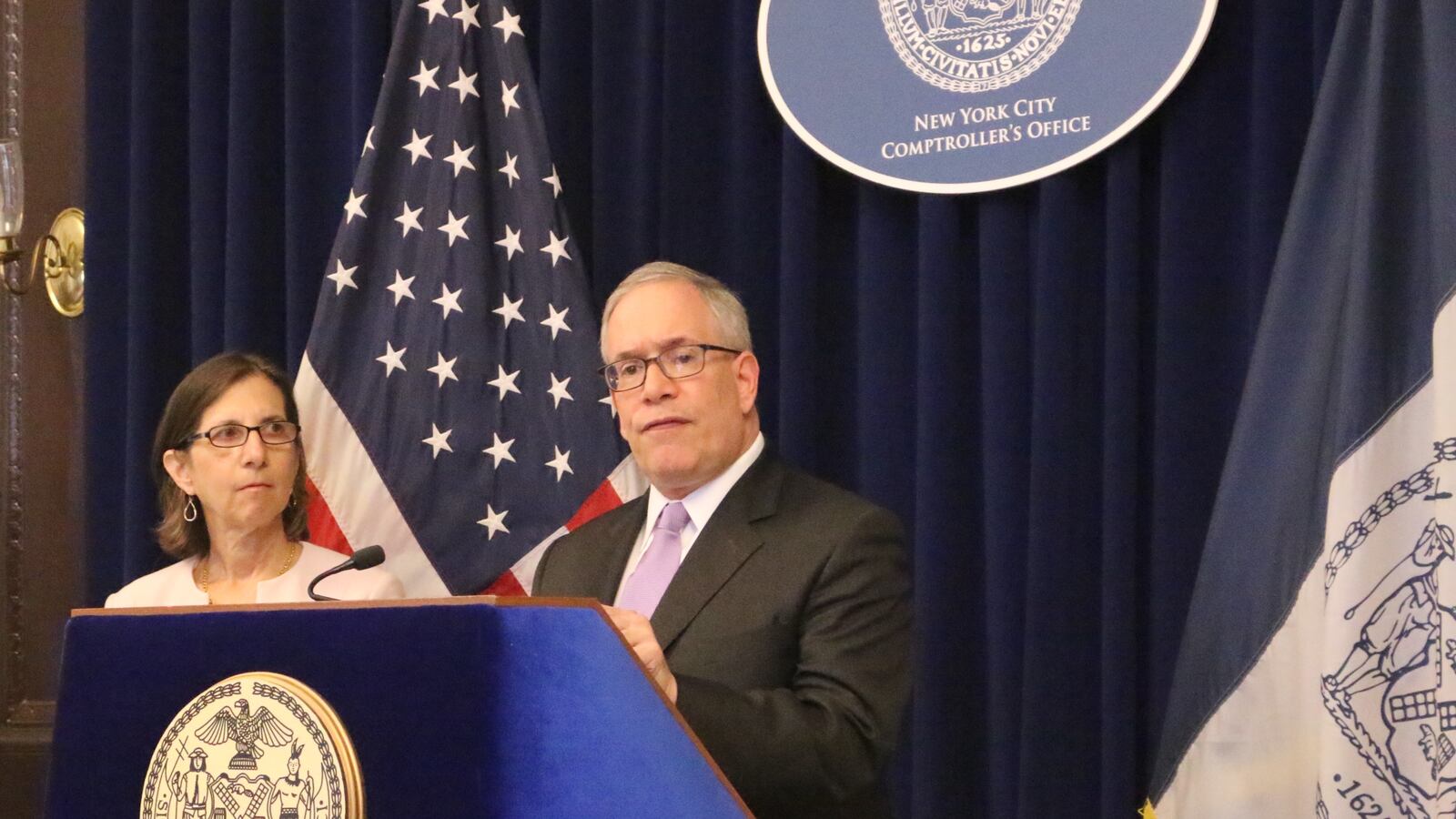Education officials have allowed many of New York City’s homeless students to miss large swaths of school without required intervention from city personnel, according to a scathing audit issued Thursday by Comptroller Scott Stringer.
The report comes as city officials have struggled to address the growing student homelessness crisis: There were over 111,000 homeless students last year — or roughly one in 10 public school students. And while advocates have pushed for the education department to devote more resources to serving homeless students, Stringer’s audit offers new evidence that they often slip through the cracks.
“In violation of the Department of Education’s regulations, I can say they’re doing almost nothing to follow up with the parents when homeless students are absent,” Stringer told the New York Times, which first reported the audit’s findings. He added in a statement: “This audit shows more than your typical set of agency breakdowns.”
Here are three key findings from the report, which you can read in full here:
1. Students living in shelters sometimes miss an astonishing amount of school.
Stringer’s audit zeroed in on 73 chronically absent students living in shelters — a fraction of the nearly 33,000 students who lived in shelters at some point during the 2015-16 school year. Though the sample size is small, the report found that those 73 students missed an average of 41.6 days of the 178-day school year.
2. In 92 percent of the cases examined, the education department had not reached out after a student living in a shelter failed to show up for school.
City rules require that staffers contact parents on the first day a student is absent without warning. But among the cases the comptroller reviewed, the city failed to conduct any outreach 92 percent of the time on the first day of a student’s absence.
And the numbers didn’t improve much even when a student was absent on a subsequent day: Overall, school personnel didn’t try to reach parents 75 percent of the time.
3. The staffers who oversee students in shelters have average caseloads of nearly 300 students.
The city employs family assistants who are supposed to work with families living in shelters and keep an eye on student attendance. But the audit found that during the 2015-16 school year, the education department deployed just 110 assistants to oversee 32,243 students living in shelters — a ratio of 293 students per family assistant.
On Thursday, the advocacy group Advocates for Children released a separate report that called for the city to boost the number of social workers to help students in shelters (family assistants, by contrast, are not required to have formal training in social work or education).
“With more than 100,000 students homeless, we have a crisis situation that demands high-level leadership from the Department of Education,” said Kim Sweet, the organization’s executive director.
In response to the audit, City Hall spokeswoman Olivia Lapeyrolerie pointed to a number of efforts the city is making to better serve homeless students, including better data sharing between city agencies and hiring social workers.
“This has been a serious challenge in our city for decades,” she wrote in a statement. “Our administration is tackling it head-on with investments in school and shelter programming, including dramatically expanded bus service, more social workers, and better monitoring so we know who’s missing from class.”


